- How to Adjust X and Y Axis Scale in Arduino Serial Plotter (No Extra Software Needed)Posted 7 months ago
- Elettronici Entusiasti: Inspiring Makers at Maker Faire Rome 2024Posted 7 months ago
- makeITcircular 2024 content launched – Part of Maker Faire Rome 2024Posted 9 months ago
- Application For Maker Faire Rome 2024: Deadline June 20thPosted 11 months ago
- Building a 3D Digital Clock with ArduinoPosted 1 year ago
- Creating a controller for Minecraft with realistic body movements using ArduinoPosted 1 year ago
- Snowflake with ArduinoPosted 1 year ago
- Holographic Christmas TreePosted 1 year ago
- Segstick: Build Your Own Self-Balancing Vehicle in Just 2 Days with ArduinoPosted 1 year ago
- ZSWatch: An Open-Source Smartwatch Project Based on the Zephyr Operating SystemPosted 1 year ago
Interview To Gabriella Levine, OSHWA president
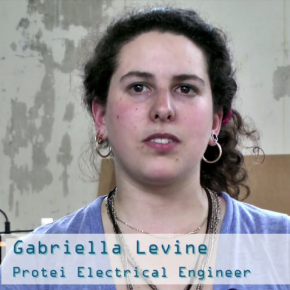 For those who still don’t know Gabriella Levine: she’s an artist and open source hardware designer doing a great job in exploring the connection between technology and ecology. Among other things, she creates incredible sculptural and robotic works that mimic environmental phenomena and animal behavior. Her current work includes Protei Inc (creating open source sailing drones), and Sneel.cc (a biomimetic swimming snake robots to sense environmental data).
For those who still don’t know Gabriella Levine: she’s an artist and open source hardware designer doing a great job in exploring the connection between technology and ecology. Among other things, she creates incredible sculptural and robotic works that mimic environmental phenomena and animal behavior. Her current work includes Protei Inc (creating open source sailing drones), and Sneel.cc (a biomimetic swimming snake robots to sense environmental data).
Gabriella recently returned from a radical experiment: circumnavigating the world by boat, as a Fellow of the Unreasonable At Sea accelerator, exposing Protei to 14 different ports worldwide, while innovating through human-engagement using a design-based approach of the Stanford d. School. Amazing stuff.
Since 2010, Levine has exhibited work in countless internationally meetups and conferences worldwide, has been featured on Wired, NYTimes, CNN, Scientific American and many more.
Gabriella also teaches at the Interactive Telecommunications Program at NYU, and can be found working at her studio, Floating Point Collective in Brooklyn.
Last but not least, Gabriella is the President of OSHWA (Open Source Hardware Association) since few months and that’s mostly why we decided to reach out: to know her views, explain her plans for the next couple of years and help the open source community get more familiar with the new amazing president of OSHWA.
First of all: what hot topics in Open Source Hardware?
[Simone Cicero] Can you tell us more about your feeling of what forces compose the open source hardware community these days? Is this becoming more a business oriented world, now that the companies are increasing in number or is still a world where hackers and startups meet, where there’s still room to create community driven innovation?
[Gabriella Levine] Open Source Hardware is a trend that is spanning across a growing number of disciplines and sectors, as it creates networks of innovations that converge in citizen / community / maker landscapes, as well as into academia and corporate sectors.
Big corporations like Google, Texas Instruments, and Intel are latching onto the trend of customizable products as well as open, modular tools. And small startups are utilizing open source hardware tools for more commercial platforms such as robots, fabrication tools, and environmental cleanup solutions. Additionally, open source hardware is on the forefront of its evolution in the world of artists and hobbyists who are making use of tools available for play, education, and engineering and design solutions. I really attribute open source hardware’s proliferation to artists, inventors, craftsmen and designers who embrace hands on collaborative work, as tools and communication became more accessible through the internet, and from this has sprouted commercial successes that are seen more and more ubiquitous in the start-up world
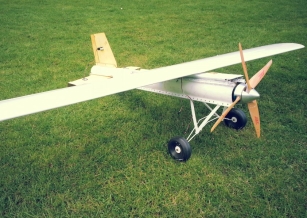 This type of collaboration in a global network which is leading to production of modular tools that people can customize to specific needs is sprouting solutions for real – world problems in academic, corporate and non profit sectors. For example, DIY drones brought technology that was once only available for the military or advanced academia to a landscape that allowed civilians to have access to such flying robot technology. After about ten years of community R&D through hobbyists embracing such tools, we are seeing more and more the commercialization of drones for aerial photography, home surveillance, and even amazing solutions for humanitarian or environmental purposes (ie Matternet, a network of unmanned flying vehicles to transport goods across rough terrain, and Open Relief, an open source platform flying drones for disaster relief and aerial mapping).
This type of collaboration in a global network which is leading to production of modular tools that people can customize to specific needs is sprouting solutions for real – world problems in academic, corporate and non profit sectors. For example, DIY drones brought technology that was once only available for the military or advanced academia to a landscape that allowed civilians to have access to such flying robot technology. After about ten years of community R&D through hobbyists embracing such tools, we are seeing more and more the commercialization of drones for aerial photography, home surveillance, and even amazing solutions for humanitarian or environmental purposes (ie Matternet, a network of unmanned flying vehicles to transport goods across rough terrain, and Open Relief, an open source platform flying drones for disaster relief and aerial mapping).
I believe that the forces driving the open source hardware landscape originated from growing accessibility of tools, which has been caused by faster communication (via the web) and cheaper faster shipping of physical goods, which has in turn led to a willingness of companies to do faster cheaper run supplies.
The internet has played a huge role in an growth of open source hardware technologies & communities. The internet has allowed for quick & easy sourcing and distribution of tools like the laser cutter, 3d printers, prototyping boards. Online Wikis and Forums have been hugely influential to allow for conversation amongst people in remote locations. These have allowed easy distribution of how-to manuals as well as a place to get questions answered fast.
Internet trends have increased the ability for attribution and branding: as limitations have been broken in a post modern world, tools and information have been distributed more quickly than ever before. This allows for the personalization and customization of items as people can get access to parts and accessories. This has also led to Crowdsourcing of labor: DIY Drones as an archetypical example of the community on the web feeding into the r&d of the company itself.
A lot of my own inspiration for engaging with open source hardware and community-driven innovation comes from seeing first hand how sharing tools and technology have impacted my own work and life. Personally, I got involved with creative technology from a background not from that of electrical engineering or computer science but instead, from that of biology (I am a former cancer researcher) and music (I nearly pursued classical piano as a profession). I made use of available toolkits and code libraries, and collaborated with people online and in person, using open source hardware tools and prototyping equipment for my own work towards building robotic platforms for environmental sensing (Protei.org & Sneel.co).
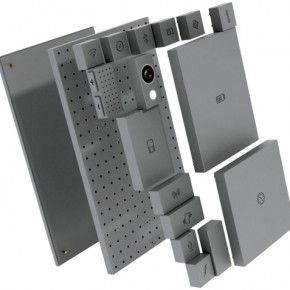 [SC] With big corporates joining the bandwagon (such as Motorola – now Google – with Project ara), what are the implications? Do you foresee negative ones?
[SC] With big corporates joining the bandwagon (such as Motorola – now Google – with Project ara), what are the implications? Do you foresee negative ones?
[GL] No, I actually don’t foresee negative consequences of larger companies accepting open source technologies. The downside might be that if larger corporations begin to be “un-transparent” to their consumers, or use the open source hardware logo when a product is really not open source hardware, this can certainly mar the open source hardware trend and hurt the community. But if large corps start to either invest in or acquire open source hardware companies, or produce their own open source hardware products, while being transparent about what products and components are open and how to find the documentation required, then I see it as a potential to bring the open source hardware option / ideal more mainstream. This can potentially be the biggest factor to increase positive impacts that lead to customizability and personalization of goods to thereby promote healthy competition in the free market that will support the growth of the trend.
[SC] New fields for open source hardware are growing day by day: many new projects bring Open Source Hardware to new markets (automotive, furniture,etc…). Some important, cross-sector, projects were born in 2013 (see the link): what are the new fields you expect Open Source Hardware to thrive with?
[GL] There are a number of types of companies that I see thriving within the Open Hardware community.
Distributors: For example, Seeed Studio, Sparkfun and Adafruit are distributing inexpensive, small run supplies of open source hardware tools, sensors, components, and goods. They are all dedicated to providing their users with documentation, tutorials and Beginner kits, as well as providing a platform for forums and wikis where people can collaborate together online. These three companies are innovating in a unique way that really shows this reciprocation between the community and the company: as the users and community members implement sensors and components, the companies see what is popular. Then, they in turn curate their inventory and make their own sensor platforms based on community needs as well as community designs. This type of sales and distribution of electronics has proven quite successful.
Platform technologies: Companies that are proliferating tools for others to use seems to be trending. These types of platforms include:
-
 Robotic platforms, think to OpenROV (open source hardware underwater unmanned submarines for purposes such as underwater photography, plastic trash sensing, fisheries monitoring, and educational tools) or DiyDrones (the largest community for modular flying robots, the biggest distributor being from the company of the founder, Chris Anderson @ 3D robotics)
Robotic platforms, think to OpenROV (open source hardware underwater unmanned submarines for purposes such as underwater photography, plastic trash sensing, fisheries monitoring, and educational tools) or DiyDrones (the largest community for modular flying robots, the biggest distributor being from the company of the founder, Chris Anderson @ 3D robotics) -
Prototyping platforms are going to continue to expand, including microcontroller platforms like from Arduino and more complex linux based systems like BeagleBone. The derivatives of both microcontrollers and linux based boards have increased so much and branched so many derivative companies and products.
-
Open Hardware toolkits for things like 3D fabrication and laser cutting (such as the Lasersaur) are also super impactful for the education platforms as well as for open and local manufacturing.
-
Open Source Hardware for educational platforms (such as Little Bits), more non traditional educational facilities are sprouting up that are using hands-on engagement, learning through play, peer-based learning.
[SC] A hot topic is surely legal: much more people and brands entering the open source hardware, bigger budgets, digital fabrication getting better and better. Do you think special plans should be put in place for this essential issue? We see that OSHWA is already promoting legal meetups: can you tell us more?
[GL] Tech innovation without the traditional legal protection of a patent does require consideration, and certainly legal issues surrounding open source hardware become a confusing space. IP issues present challenges to open source hardware companies that both want to keep their products open (viral), as well as protect themselves and their technology as much as possible.
I believe that a big value in OSHWA for organizations pursuing open source hardware will actually come from providing education for the community about options and licenses. This is an attempt to help companies understand how to find resources, understand what types of licenses are available, and what the implications of different licenses are. [ed: did you check our article on choosing you license?]
OSHWA is attempting to provide as much centralized information about possible options for producing open source hardware, including what challenges to be aware of.
What makes this initiative more challenging however is that each situation ends up being case by case, and laws vary internationally surrounding Patents and IP protection, so it is difficult to have a centralized set of answers.
Regardless, OSHWA has begun to host “legal meetups” (see here for notes from the first meetup http://www.oshwa.org/2013/12/05/open-hardware-legal-meetup-nyu-nov-11/) to open up the conversation between the OSHWA board and a few attorneys who are willing to walk through some of the challenges when producing technology without patents. The goal is to lay out some possible solutions including options for licenses when releasing the work.
OSHWA is indeed planning more meetups in the next year, and will document these to hopefully eventually be a resource for companies to turn to, when deciding to release products as open source hardware. Additionally, OSHWA would like to host some educational workshops during the 2014 Open Hardware Summit, meant to educate the community and members about some of the issues at hand for OSHW Companies. Some of the pressing questions include: How can a company ensure that openness on their product remain viral? And how can a company / inventor ensure protection that a product they are making doesn’t get patented by another company.
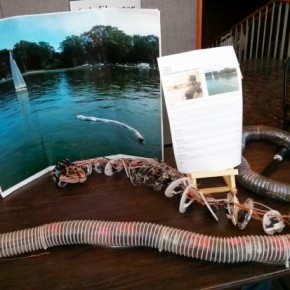 [SC] What are other hot topics in Open Source Hardware these days that we didn’t mention?
[SC] What are other hot topics in Open Source Hardware these days that we didn’t mention?
[GL] Open source hardware and art is not an area I have seen enough attention to. I have a pressing question about what is the criteria for open source hardware – I do not personally believe it has to be commercially in production (as in sold for sake of $ or profit). I have some questions about this landscape, about where open source hardware and art intersect, and how artists, such as myself, are embracing open source hardware toolkits not just for design but also as a conceptual platform.
The other hot topic that I want to see more conversation around is the proliferation of open source hardware to allow open access to information. With emerging disclosures about the NSA’s surveillance programs, blame has been targeted at the NSA’s collaboration with large companies like Google. But equally important is the digital and physical infrastructure of the Internet, which have enabled the NSA to build Upstream Collection programs like Fairview and Blarney to monitor Internet traffic. The emergence of open source hardware technologies is crucial for open access to information.
Talking about the friction between Business and Freedoms
[SC] Framing openness: is choosing to be open in hardware today still sort of a political statement, or is becoming more and more also a commercial strategy, as in software?
[GL] I do believe that it is becoming commercially strategic for companies to release open source hardware tools and platforms. Because tech innovation is happening so rapidly, companies have to innovate quickly. As the trend of open toolkits and information becomes more mainstream, no longer will patent ownership be the driving force behind success, but success will come from the best technology that is fastest to make it to market. Releasing open source hardware is certainly commercially beneficial in some ways for companies and for consumers. For consumers, it allows the ability to control, modify, personalize items and tools. This allows for healthy competition within the market, and quicker proliferation of the product through derivatives (as Arduino did). For example, Arduino has created a market share based upon both Arduinos as well as derivatives. Additionally, open source hardware can contribute to commercial success because it puts so much emphasis on “the Brand” (ie the name , whether it be trademarked or not). For example, Arduino became known globally due to attribution.
The other commercial benefit is that open source hardware allows for the outsourcing of labor, so that the community makes the product better. A great example of this is the relationship between 3D robotics and DIY Drones. 3D robotics make drones and drone kits, and the DIY Drone community has voluntarily improved the software, expanded it cross platform, and tested it.
Another example is Sparkfun and Adafruit – For example, these companies seem to survey what sensors the community is using, and see what people have made, and then decide to produce their own products or sensors based on what they see is popular, or even based upon the designs of some of the community.
[SC] How to solve the rising doubts in people that want to create a sustainable business around Open Source Hardware? This is still a key understanding issue, in our daily exprerience.
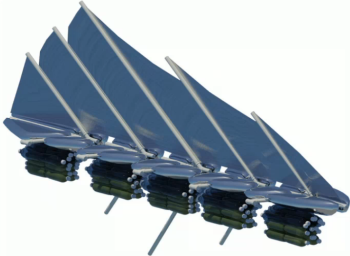 [GL] As I have given talks about both my involvement with open source hardware projects (Protei), Open Hardware, and OSHWA, citing some of the examples of businesses that are indeed sustainable through selling open source hardware is the best way to begin to communicate that it is possible to bypass the patent system while still being commercially successful. And indeed, as more and more companies grow, companies selling open source hardware might become more mainstream, and more standardized, which will help raise awareness that it is possible. But I also believe that there might be some new strategies and models that open source hardware companies that grow commercially successful will be able to share, as it becomes more mainstream.
[GL] As I have given talks about both my involvement with open source hardware projects (Protei), Open Hardware, and OSHWA, citing some of the examples of businesses that are indeed sustainable through selling open source hardware is the best way to begin to communicate that it is possible to bypass the patent system while still being commercially successful. And indeed, as more and more companies grow, companies selling open source hardware might become more mainstream, and more standardized, which will help raise awareness that it is possible. But I also believe that there might be some new strategies and models that open source hardware companies that grow commercially successful will be able to share, as it becomes more mainstream.
I do get many questions demonstrating fear and extreme skepticism about not patenting technology, and I believe that the more that OSHWA is able to help raise public awareness and understanding about open source hardware as an option, the more publicly known it will become as an option. Publicity and raising awareness of Open Hardware will be a huge driving factor in being able to demonstrate that open source hardware can be a commercially sustainable solution.
Part of OSHWA’s mission to educate the community about open source hardware, and by doing this through collecting data about open source hardware companies is also going to help educate people about methods and examples where open source hardware can be commercially sustainable.
I believe that as open source hardware penetrates into the educational system, the more that it will be embraced as a possible option. This includes both being a part of education in conversation and in practice: Both in terms of tools for people to use for research, but also to educated people that there are options other than patents when innovating technology.
[SC] How to overcome loose definitions: everyone is open source hardware but nobody really is! Is having a definition enough?
[GL]The definition is certainly a confusing issue, even so far as what it represents. I often hear it mistakenly referred to as a license, which it is not, and nor is it a legal binding statement. Firstly, not enough people know that there even is a definition for Open Hardware. I believe that this can change if OSHWA spreads the word more, which I would like to take initiative with. For example, I aim to put effort into gaining publicity, raising awareness, branding, and educating the community. A lot of OSHWA’s programming efforts are being put into efforts to tackle this issue. I hope that OSHWA can do more to “spread the word” to corporations, governments, and startups, about what open source hardware is by having more people representing Open Hardware & OSHWA to the public via talks, blog posts, and workshops engaging people to converse and discuss the open source hardware movement and ideal.
Additionally important is to get open source hardware into the education system: As some of these tools spread into academia and education, for example LittleBits (a modular prototyping platform for kids that snaps together with magnets), kids will be exposed to open source hardware tools. I believe that often in education (especially design or engineering), it is enforced that patents mean success. If more Open Hardware penetrates into education systems, both as tools for research and prototyping, as well as in the conversation surrounding policy and IP, this will be a lynchpin for bringing open source hardware definition more into the radar as an option.
[SC] Branching Internationally: we know, OSHWA was born as a US organization and we’re now in the process to internationalize it, likely starting with organizing events outside the US and also launching a branching process: what countries (you went across the globe a lot) also thanks to their specific histories, you see the most active in the Open Source Hardware business?
[GL] China is a very interesting space for me to look towards as a country that, due to its lack of IP laws, is rapidly producing hardware. There is fast-paced manufacturing, and inexpensive tools and materials. I believe that China is going to be a huge driving force in the open source hardware landscape. Exemplary of this, I really love Tom Igoe’s “Idle Speculation on the Shanzhai and Open Fabrication”
He discusses the interesting trend has sprouted from China’s copycat culture, called Shanzhai, which refers to a cluster of about hundreds of “underground” factories tucked away in the mountains of Shenzhen, China, that rapidly produce cheap knock off consumer electronics such as watches and iPhones. Brand names include NOKLA (Nokia knockoffs) and Hi-Phone (iPhone copycats). Although quite secretive and hard to access, Shanzhai is not a small operation: by 2010, Shanzhai cell phones took 20% of the 2G market.
There are many similarities between Shanzhai and the open source hardware community. Both Shanzhai and open source hardware projects borrow information, tools, source code, CAD files, and techniques; both improve upon other’s work to accelerate development. What differentiates Shanzhai from open source hardware projects is that it doesn’t build upon the work of others for increased innovation, but it exactly copies it and prices it lower.
And, due to these reasons, Protei has relocated its central company to Hong Kong because of the accessibility to tools, inexpensive manufacturing, and the fast paced rate of innovation due to that, just across the water, in Shenzhen.
Additionally, I also believe that countries like Germany, Netherlands, Japan that are at the forefront of design and innovation will indeed play a big role in bringing open source hardware more mainstream. I’m not too knowledgeable about international laws, but I wonder if open source hardware will be more fast to grow in countries that have less emphasis on patents as a means of proving success or innovation (like a lot of mainstream engineering or design is in the US). And of course, in the US I see the trend of open source hardware increasing, and corporations and governments certainly have interest to embrace it as an option.
There is additionally a lot of work happening in poorer countries where citizen science and grassroots activism is bringing more open tools and methods to local communities. I am working with Hackteria, a community platform to engage scientists, academics, hackers, and artists to collaborate to proliferate tools and platforms for research and innovation. There are organizations globally that are collaborating to bring open source hardware tools to local communities. Some of these local organizations occur in countries like Indonesia (LifePatch.org), Nepal (Kharkana.asia), India (Art/Science Bangalore artscienceblr.org). Although these organizations are grassroots driven, they are gaining fast traction and beginning collaboration with academia and corporations in order to penetrate more into civilian and popular mainstream a bit more.
PROTEI and Sustainability
[SC] Tell us a little bit about PROTEI project: what’s the status and what are the challenges today?
[GL] Protei is an open source hardware Shape Shifting Sailing Robot, sustainably driven by wind, developed to study and clean the oceans by transporting scientific payload or clean up material . Protei was conceived by Cesar Harada in response to the BP oil spills, when he saw the inefficiencies of the relief efforts, that were hazardous to fishermen and only collected 3% of the oil on the water. Cesar started prototyping the boats in his garage in New Orleans, then formed a collaborative community website, which eventually brought people together in an international network that formed to support the development of Protei technology. It has since developed into a modular platform for carrying multiple sensors simultaneously for things like measuring plastic trash in the pacific ocean, monitoring radioactivity off the coast of Fukushima, and surveilling oil spills.
Protei started from a grassroots community of hobbyist and citizen scientists, and the core work now is being devoted to developing and selling “scientific toys” that can be hacked and upgraded to environmental science or activism. Cesar has opened the main Protei branch in Hong Kong because of its proximity to electro-mechanical manufacturing, both low and high volume in Shenzhen in China, including accessible tools, inexpensive components, and an extremely fast paced environment.
We are in the process of manufacturing and plan to have our release date in April for the first batch of Protei vessels, to be sold and distributed internationally. We’re in the process of building a new community website, git repo and collaboration platform.
[SC] In general I would love to know more about your vision of the role of open source hardware as an enabler of new visions for sustainability: creating new narratives around product design that includes access, death of planned obsolescence, is it enough? Do you foresee a more general approach to Open Source Manufacturing coming up with relations to sustainability issue? What is the big picture?
[GL] I do believe that due to the fast paced nature of tech innovation now, open source hardware and open access to information is going to lead to a changing landscape of manufacturing and tech. This is exemplified by China’s copycat culture which is actually increasing the rate of innovation massively. I believe that building companies to fail, always thinking ahead, innovating fast is going to indeed be more of the trend. It has to be. As on-demand prototyping comes to more and more homes (3d printers, inexpensive laser cutters, etc), and localization of manufacturing tools increases, no longer can ownership of a technology be the winner, but the best technology that is fastest to make it to market is going to be increasingly important.
Few words about OSHWA plans, in detail
[SC] What are the overall plans for OSHWA in 2014 – 2015 under your presidency?
[GL]First of all, work on standardization. The definition states what is Open Hardware, but I believe that there needs to be more documentation for people to turn to in order to know HOW to release their work. What are the best ways to release hardware and what are the standards for documentation? There is a lot of work happening on this (especially by Catarina, David Mellis, and Limor Fried). See OSHWA’s “best practices” and Adafruit’s “Open Source Hardware Overview”.
I think of OSHWA’s initiatives is to produce some available documents, like a standard toolkit for releasing open source hardware, that can help companies and individuals understand some of the confusion and loose definitions. One example might be a “laundry list” that can allow companies producing products to document all of the hardware components for that product and how they are licensed.
OSHWA is increasing its public presence, in order to educate people and companies about the fact that there is indeed the option of open source hardware, to clear up some confusion surrounding the definition, to promote OSHWA as a resource for providing support and education and to represent the community. This public awareness will come from planned workshops, educational events, and an international summit this year.
OSHWA will continue to work together and with some advice from attorneys who are open to discussing some of the legal options and licenses available, compile some clarifying documents that can help companies and individual see what some legal options are available for producing and distributing open source hardware.
OSHWA also is in the planning to continue to conduct business surveys to provide data about open source hardware companies, as well as lead more educational programs and summits, possibly including an Open Manufacturing Summit.
——————————–
We hope you liked this interview: it was great being able to dig deeper into Gabriella’s plan for the next two years as OSHWA president, and you can appreciate, from the deepness of the topics discussed in this interview, how fast the landscape of open source hardware is growing and how ambitious the vision of the association is.
Let me close this interview with an appeal: that of joining the OSHWA by becoming a member to sustain the amazing effort of this community. Take part!
If you liked the interview, don’t forget to follow @meedabyte and @openelectronics on Twitter!

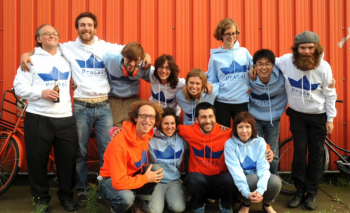
















Pingback: P2P Foundation's blog » Blog Archive » The State of (Commercial) Open Source Hardware in 2013
Pingback: The State of (Commercial) Open Source Hardware in 2013 | PDX Currency Corporation
Pingback: Open Hardware Summit 2014 Rome: From Making Open to Open Manufacturing | Open Electronics